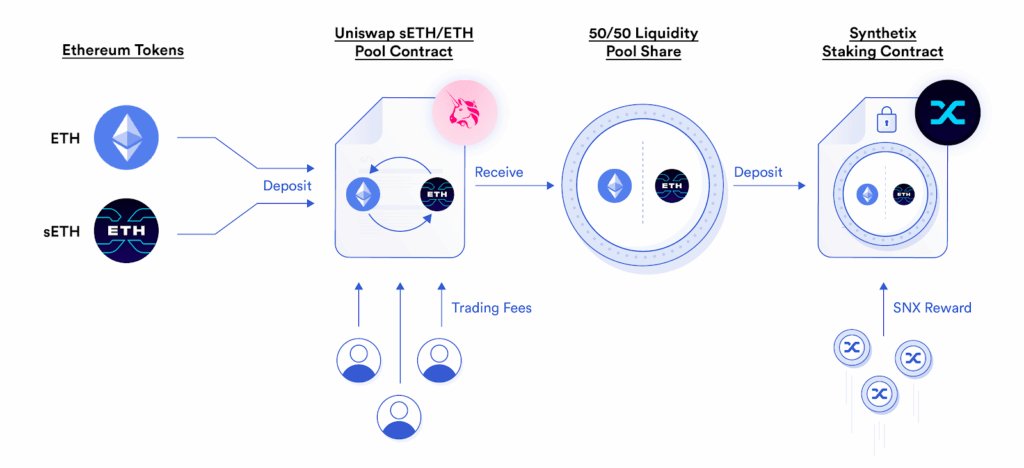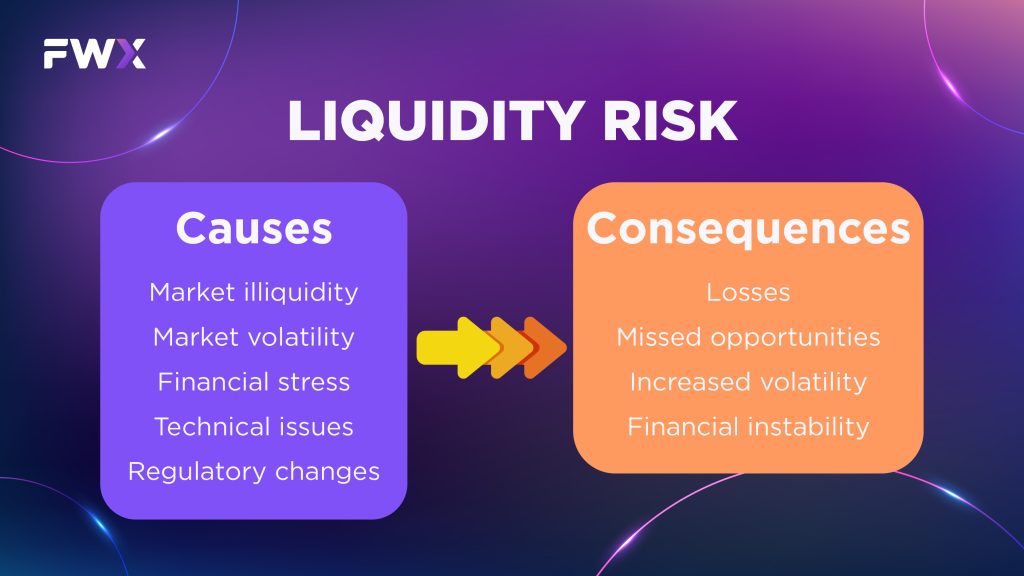In the world of finance, liquidity is a term thrown around frequently, but its true meaning and significance might not always be crystal clear. Simply put, it is the ease with which an asset can be converted into cash without affecting its price. The more readily an asset can be turned into cash, the more liquid it is considered.
Understanding liquidity is crucial for both individuals and businesses, as it plays a vital role in managing finances and making informed investment decisions. This article delves into the intricacies of liquidity, exploring its various aspects and its importance in the financial landscape.
What Is Liquidity?

Liquidity refers to the ease with which an asset or security can be bought or sold in the market without affecting its price. In other words, it measures how quickly and efficiently an asset can be converted into cash or another asset without causing a significant impact on its market price.
Assets that can be easily bought or sold in the market with minimal price disruption are considered highly liquid, while those that take longer to sell or come with a larger price impact are considered less liquid.
Liquidity is crucial in financial markets for several reasons:
- Market Efficiency: High liquidity ensures that buyers and sellers can easily find each other, leading to a more efficient price discovery process.
- Reduced Transaction Costs: Liquid markets typically have lower transaction costs because bid-ask spreads (the difference between the buying and selling prices) are narrower.
- Risk Management: Investors and traders prefer liquid assets as they can quickly enter or exit positions, reducing exposure to unexpected market movements.
- Market Stability: It contributes to overall market stability, making it less susceptible to extreme price fluctuations.
It can be influenced by factors such as trading volume, bid-ask spreads, market depth, and the presence of market makers. Assets like major currencies, large-cap stocks, and government bonds are often highly liquid, while smaller stocks, certain derivatives, or less actively traded securities may have lower liquidity.
What is a Liquidity Provider?
A liquidity provider is a market participant who contributes assets to a market to facilitate trading and improve market efficiency. They act as the backbone of financial markets, ensuring that buyers and sellers can always find each other. Without liquidity providers, markets would be illiquid, making it difficult and expensive to buy and sell assets.
Liquidity providers can be:
- Individuals: Individuals can provide liquidity to markets by trading assets on exchanges or through peer-to-peer platforms.
- Institutions: Banks, hedge funds, and other financial institutions are major providers of liquidity in various markets.
- Market makers: Market makers are specialized firms that quote both buy and sell prices for an asset, creating a market where others can trade.
- Automated market makers (AMMs): AMMs are computer programs that use algorithms to set prices for assets based on supply and demand. They are becoming increasingly popular in the world of decentralized finance (DeFi).
Liquidity providers play a crucial role in the smooth functioning of financial markets. By providing liquidity, they help to ensure that markets are efficient and that investors can easily buy and sell assets. This benefits everyone who participates in financial markets, from individuals to businesses to institutions.
What is Liquidity Mining?
Liquidity mining is an innovative way to incentivize users to contribute their crypto assets to a decentralized exchange (DEX) or other liquidity pool. By locking their tokens in a smart contract, users earn rewards in the form of additional tokens, trading fees, or governance rights. This process helps to create a more efficient and liquid market for the underlying assets.

Source: What Is Liquidity Mining? | A Beginner’s Guide to Decentralized Finance (DeFi) (shrimpy.io)
How does liquidity mining work?
- Users deposit their assets into a liquidity pool. These pools typically consist of two or more tokens that are paired together. For example, a pool might contain ETH and DAI, allowing users to swap between these two tokens.
- The deposited assets are used to facilitate trading on the DEX. When users trade tokens on the DEX, they pay a small fee, which is then distributed to the liquidity providers in proportion to their contribution to the pool.
- Liquidity providers also earn rewards in the form of additional tokens. These rewards can be issued by the DEX itself or by other projects that are building on top of the DEX.
What are Liquid Assets?
Liquid assets are assets that can be easily converted into cash without significant loss of value. They are considered essential for managing finances and meeting short-term obligations.
Here are some key characteristics of liquid assets:
- Convertible to cash quickly: They can be sold or exchanged for cash within a short period, typically within a few days.
- Minimal impact on price: Selling a liquid asset does not significantly affect its market value.
- Readily available: They are easily accessible and can be found in various forms.
Types of Liquid Assets
- Cash: This includes physical currency, checking accounts, and savings accounts.
- Cash equivalents: These are highly liquid investments that can be easily converted to cash within a short period. Examples include money market accounts, certificates of deposit (CDs), and treasury bills.
- Marketable securities: These are securities that are readily traded on a stock exchange. Examples include stocks, bonds, and exchange-traded funds (ETFs).
- Mutual funds: These are investment vehicles that pool together money from multiple investors and invest it in a diversified portfolio of assets. Many mutual funds offer same-day or next-day redemption, making them highly liquid.
- Accounts receivable: These represent the amount of money owed to a business by its customers. While not as readily convertible as cash, they can be used as collateral for loans and can be factored for immediate cash.
- Inventory: For businesses, readily saleable inventory can be considered a liquid asset.
Types of Liquidity

Liquidity is a critical concept in finance, representing the ease with which an asset can be converted into cash without significantly affecting its price. While the basic concept is simple, there are different types of it to consider, each with its own characteristics and implications.
- Market Liquidity: Market liquidity refers to the ease with which an asset can be bought and sold in a market. It is influenced by several factors.
- Accounting Liquidity: Accounting liquidity refers to a company’s ability to meet its short-term financial obligations, such as paying bills and salaries. It is usually measured by various financial ratios.
- Market Microstructure Liquidity: Market microstructure liquidity delves deeper into the intricacies of order flow and market dynamics, analyzing how individual orders and market participants influence liquidity.
- Dealer liquidity: Dealer liquidity is provided by market makers, institutions that quote both buy and sell prices for an asset, ensuring a continuous market regardless of available buyers and sellers. This type of it is crucial for markets with limited natural liquidity.
- Algorithmic liquidity: Algorithmic liquidity is provided by automated trading algorithms that generate orders based on predefined criteria and market conditions. This type of liquidity plays an increasingly significant role in modern markets, particularly in high-frequency trading.
How to measure Liquidity?

Here’s how to measure it in crypto using three common ratios:
- Current Ratio
Current Ratio = Current Assets / Current Liabilities
Current Assets in Crypto:
- Crypto Holdings: The value of the cryptocurrency itself.
- Cash Equivalents: Stablecoins held by the project.
- Accounts Receivable: Debts owed to the project in crypto or fiat currencies.
Current Liabilities in Crypto:
- Short-term Debt: Loans or obligations due within one year.
- Accounts Payable: Debts owed to suppliers or service providers.
- Accrued Expenses: Expenses incurred but not yet paid.
Example:
- A project has 100,000 USDT in stablecoins, 100,000 USD in accounts receivable, and 100,000 USD in short-term debt. Its current ratio would be (100,000 + 100,000) / 100,000 = 2. This indicates that the project has twice as many current assets as current liabilities, suggesting good short-term liquidity.
- Quick Ratio
Quick Ratio = (Cash + Marketable Securities + Accounts Receivable) / Current Liabilities
Marketable Securities in Crypto:
- Other readily convertible cryptocurrencies held by the project.
Example:
- The same project as above also holds 150,000 USD in readily convertible cryptocurrencies. Its quick ratio would be (100,000 + 150,000 + 100,000) / 100,000 = 3.5. This indicates an even stronger liquidity position compared to just the current ratio.
- Cash Ratio
Cash Ratio = (Cash + Marketable Securities) / Current Liabilities
Example:
- Using the same figures, the cash ratio would be (100,000 + 150,000) / 100,000 = 2.5. This indicates that the project can cover its current liabilities with its most liquid assets, suggesting a conservative approach to liquidity management.
Why is Liquidity important?

Liquidity is a cornerstone of any successful financial system. It allows for the smooth and efficient flow of capital, which is essential for economic growth and stability. Here are some key reasons why it is important:
1. Facilitates Trading:
- Ease of entering and exiting positions: It ensures investors can easily buy and sell assets without encountering significant price fluctuations or delays. This allows them to react to market changes and manage their investment portfolios efficiently.
- Efficient price discovery: A liquid market provides a continuous stream of buy and sell orders, leading to more accurate and efficient price discovery for assets.
- Reduced transaction costs: It fosters competition among market participants, leading to lower bid-ask spreads and transaction costs for investors.
2. Enhances Risk Management:
- Diversification: It allows investors to diversify their portfolios across different asset classes, reducing risk and increasing potential returns.
- Hedging: Investors can utilize liquid markets to hedge their existing positions against potential losses.
- Managing cash flow: Businesses rely on liquidity to manage their day-to-day operations and meet financial obligations like payroll and bills.
3. Promotes Economic Growth:
- Investment opportunities: Liquidity attracts investments by providing investors with confidence and ease in entering and exiting markets.
- Capital formation: A liquid market facilitates the efficient allocation of capital to productive uses, driving economic growth and innovation.
- Business expansion: Businesses rely on access to capital for expansion and investment, which is facilitated by a liquid financial system.
4. Supports Financial Stability:
- Shock absorption: It enables markets to absorb sudden shocks and disruptions, minimizing their impact on the overall financial system.
- Contingency planning: Robust liquidity provides financial institutions and regulators with greater flexibility to respond to financial crises and mitigate potential damage.
- Transparency and confidence: A transparent and liquid market fosters trust among investors and financial institutions, promoting stability and reducing systemic risk.
The Importance of Maintaining Liquidity:
Maintaining and promoting liquidity is crucial for ensuring the smooth functioning of financial markets, fostering economic growth, and protecting financial stability. This requires a combination of:
- Sound regulatory frameworks: Regulatory policies should encourage healthy market practices and prevent excessive risk-taking that can negatively impact liquidity.
- Transparency and information dissemination: Providing timely and accurate information to market participants fosters confidence and facilitates informed decision-making.
- Technological innovation: Continuously evolving financial technology can enhance market efficiency, improve it, and facilitate access to financial services.
By understanding the importance of liquidity and taking steps to maintain it, we can create a more resilient and sustainable financial system for all.
What is Liquidity risk?

Liquidity risk is a financial risk that arises from the difficulty or inability to convert an asset into cash quickly and without a significant loss in value. This can have a negative impact on individuals, businesses, and even the entire financial system.
Here’s a breakdown of the key aspects of liquidity risk:
Causes of Liquidity Risk:
- Market illiquidity: If there are few buyers and sellers for an asset, it may be difficult to sell it quickly without significantly impacting its price. This is particularly true for assets like real estate, collectibles, and some illiquid stocks.
- Market volatility: During periods of market volatility, investors may become reluctant to sell assets, further reducing liquidity and making it more difficult to exit positions.
- Financial stress: If a company or individual experiences financial stress, they may be forced to sell assets quickly, putting downward pressure on prices and exacerbating liquidity risk.
- Technical issues: System outages or technical problems on trading platforms can disrupt trading activity and limit liquidity, especially for electronically traded assets.
- Regulatory changes: Regulatory changes could impact the way certain assets are traded, potentially affecting their liquidity and increasing risk.
Consequences of Liquidity Risk:
- Losses: Investors may be forced to sell assets at a loss if they need to convert them to cash quickly.
- Missed opportunities: Lack of liquidity can prevent investors from taking advantage of profitable investment opportunities.
- Increased volatility: Illiquid markets can become more volatile, leading to larger price swings and making it more difficult to manage risk.
- Financial instability: In severe cases, liquidity risk can spread throughout the financial system, leading to instability and even financial crises.
Liquidity risk management
Liquidity risk, the potential inability to convert assets into cash quickly and without significant loss, poses a significant challenge for individuals, businesses, and financial institutions alike. Effective liquidity risk management strategies are crucial for mitigating this risk and ensuring financial stability.
Managing Liquidity Risk:
- Diversification: Investing in a variety of assets with different levels of liquidity can help mitigate the risk of being unable to sell an asset quickly.
- Maintaining a cash buffer: Having a readily available source of cash can help investors cover expenses and avoid being forced to sell assets under pressure.
- Investing in liquid assets: Focusing on assets that are easy to buy and sell, such as cash, government bonds, and highly traded stocks, can help reduce liquidity risk.
- Understanding market conditions: Staying informed about market sentiment and potential changes in liquidity can help investors make informed decisions and manage risk accordingly.
- Utilizing liquidity pools: In the world of DeFi, liquidity pools offer a way for investors to earn returns while contributing to the overall liquidity of the market.
In summary, liquidity is vital for efficient markets, effective risk management, and economic growth. Entities must proactively manage liquidity risks through strategies such as maintaining it buffers, diversifying funding sources, and implementing contingency plans. A balanced approach is essential to meet short-term obligations while optimizing capital utilization for long-term goals. Overall, effective liquidity management contributes to market stability and the resilience of financial entities in varying economic conditions.


